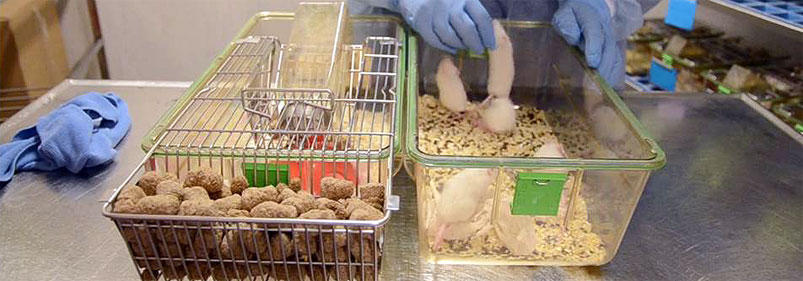Training and documentation of practical skills
Here you will find information about what is required in the practical training part for work with animals at MED-UiB, and how this must be documented. - see attached document below as an example.
Main content
The educational requirements according to the directive (§23) are so-called "outcome based". There is no requirement for the length of the training, but the candidate must demonstrate that he/she master the procedures he/she need to perform.
In addition, training where live animals are used must be relevant and training will be tailored to the particular needs of research groups. This requires an individually adapted training for the individual.
Who needs to be trained – and what must they be trained to do – Mastering relevant procedures
When implementing EU directive 2010/63* (summer 2015, see www.fdu.no) into the Norwegian Animal research regulations, the institution must ensure that those who carry out procedures on animals (immobilization, blood sampling, injection, etc.) master this without affecting the animal or the result of the attempt in a negative way.
The practical training must be relevant to the animal species you will be working with and the procedures you need in your research.
Practical training should be completed as close to the start of trials as possible so that you can quickly start applying your practical skills.
With the implementation of the new directive in 2015, new classifications of personnel who work with laboratory animals are also introduced. Requirements for technical skills ("skills") are only set for those who will perform procedures on animals. People who plan experiments but do not perform procedures themselves must know these procedures and their effects on the animals, but they do not need to demonstrate mastery of them in practice.
Minimum demands for everyone working in the Animal facility
Anyone who is going to work with animals must at least master the following
- Safe handling of animals ("tunnel" or "cup" action)
- Recognize symptoms of pain and suffering in animals
- Reporting of animal welfare concerns
- Humane killing of animals (CO2 or cervical dislocation)
- Hygiene procedures and use of protective equipment
Relevant procedures and techniques
How much training is necessary depends on the complexity of procedures and your ability to master those. A supervisor must document that you master procedures as such a level that you don’t cause unnecessary stress for the animals or anything that can bias the results of the experiments. In case you are using special equipment you also have to document that you can operate it properly.
The requirement for practical training is outcome based, which means that the length of training is not relevntt, regardless of whether it takes you a day or 3 months. What is important, is that the candidate can show that he/she is mastering the techniques and procedures that will be used in the project at a certain level.
Common techniques and procedures
HANDLING and TECHNIQUES
• Safe restrain
• Injection techniques
• Blood sampling techniques
• Minimally invasive procedures without anesthesia
Training is provided in these if it is relevant for your experiment.
Assessment: You must demonstrate that you master current techniques and procedures for the species you will be working with.
Advanced procedures
Invasive procedures with anesthesia
- Principles of surgery
- Microsurgery
These are skills that require special training.
Time for next practical training session at Dyreavdelingen
The animal facility offers practical training in basic techniques such as handling, restrain, blood sampling (V. Saphena), injection techniques, catheter insertion and organ removal in rodents.
We can also offer practical training on the start-up and control of anesthetic gas devices, sterile draping and aseptic procedures during surgery.
Other practical training in addition to this is usually provided by the insurance group or on external, specialized courses.
Due to the limited staff during summer, practical training will not be carried out during the week 24-34 You can still register your need for training on the link below - and we will contact you for the next practical training opportunity |
Link to registration for practical training by Dyreavdelingen
Documentation
You must provide documentation of training when you apply to carry out experiments on animals. You should upload all training documentation (both theoretical) and from practical training into your profile in FOTS.
The person(s) who are training you must complete a document to document the practical training. You can use one of the forms that you can find in pdf here on the page on the right.
The documentation can be in the form of a certificate (letter) from the person(s) who taught you, which describes the procedures you have learned and in what apecies, and confirms that you have mastered the techniques so that you can work independently.
An example of how you can build you CV for continuous training and education and training is available here
